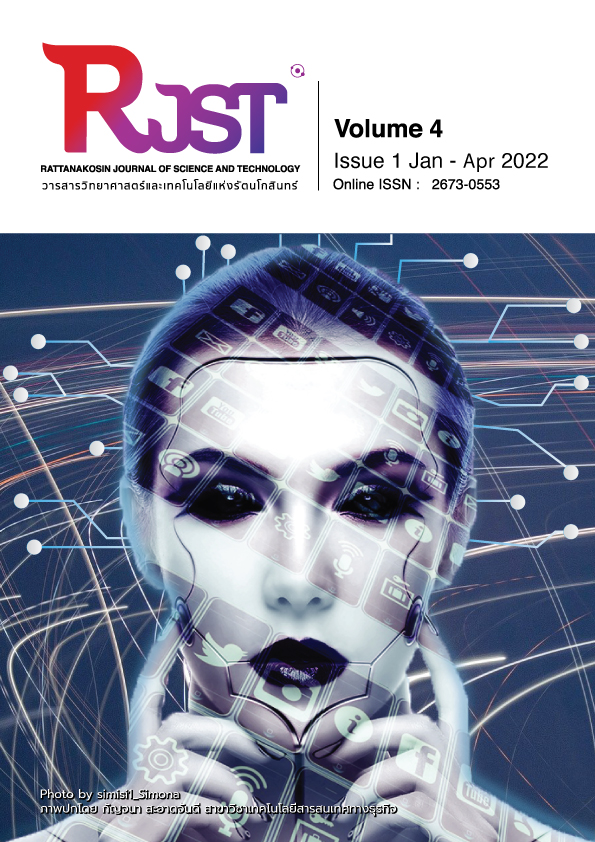Challenging issues pertaining protection of the patent regarding human genetics unit for disease treatment
Main Article Content
Abstract
Patent is an intellectual property which is an industrial property classified as a scientific invention that is valuable towards the economy. To ensure that the value of thought or research and invention is not imitated, the state has planned a suitable lawful system to enforce protection. This has benefitted the advancement of science, engineering and businesses that aims to increase the marketing value of products. In return, confidence is formed with the consumer, thus, creating more opportunities to receive funding, improving industrial resources.
According to a study of the principles, concepts, and theories underlying patent protection for human genes used for therapeutic purposes, as well as a comparative analysis of international agreements, foreign and Thai laws governing patent applications for human genes used for therapeutic purposes, it was determined that there is no definition of human genes in patent law. This could raise concerns about the clarity with which government agencies responsible for patent applications involving human genetics for the treatment of diseases and the justice system interpret patent applications involving human genetics for the medical purposes. The composition of the patent application for therapeutic human genes is critical for the patent application system to protect therapeutic human genomes. If the composition of a patent on a human gene for therapeutic purposes is clearly defined, the problem of specifying the scope of claims that are too broad can be resolved.
Thus, the author agreed that the law should be amended to grant the patenting of human genes for therapeutic purposes in Thailand. It is proposed to amend section 9 of the Patent Act B.E. 2522 by adding the definition of scientific terminology Reduce the problem of interpreting the scope of the word definition. “Genetic material” and “derivative” amend the content of the provisions of Section 9 to protect genetic material, derivative, extract or any other thing or any part One of the creatures created by humans for the purpose of disease treatment and increase the protection of intellectual property by clearly stipulating in the constitution by requiring the State to provide and promote research, innovation, invention or discovery to create new knowledge. by focusing on biotechnology for the prevention and disease treatment.
Article Details

This work is licensed under a Creative Commons Attribution-NonCommercial-NoDerivatives 4.0 International License.
The content within the published articles, including images and tables, is copyrighted by Rajamangala University of Technology Rattanakosin. Any use of the article's content, text, ideas, images, or tables for commercial purposes in various formats requires permission from the journal's editorial board.
Rajamangala University of Technology Rattanakosin permits the use and dissemination of article files under the condition that proper attribution to the journal is provided and the content is not used for commercial purposes.
The opinions and views expressed in the articles are solely those of the respective authors and are not associated with Rajamangala University of Technology Rattanakosin or other faculty members in the university. The authors bear full responsibility for the content of their articles, including any errors, and are responsible for the content and editorial review. The editorial board is not responsible for the content or views expressed in the articles.
References
MedlinePlus. What is a Gene .
https://ghr.nlm. nih.gov/primer/basics/gene
MedlinePlus. What are genome editing an CRISPR Cas9.
https://ghr.nlm.nih.gov/primer/genomicresearch/genomeediting
Lumen. Mendel’s Law of Heredity.
https://courses.lumenlearning.com/boundless-biology/chapter/laws-of-inheritance/
Biological Principles. Chromosome theory of inheritance. https://bioprinciples.biosci.gatech.edu/module-4-genes-and-genomes/4-4-linkage-sex-linkage-and-pedigree-analysis/
รองศาสตราจารย ดร. สมชาย กษิติประดิษฐ, “สิทธิมนุษยชน Human Rights (LW 446)” (กรุงเทพฯ : สำนักพิมพมหาวิทยาลัยรามคําแหง) หน้า 5–22
Council for International Organizations of Medical Sciences (CIOMS), International Ethical Guidelines for biomedical research involving human subjects.
https://www.ncbi.nlm.nih.gov/pmc/ articles/PMC1376447/pdf/jmedeth00291-0061.pdf
Declaration of Helsinki 2008.
https://www.wma.net/what-we-do/medical-ethics/declaration-of-helsinki/doh-oct2008/
Good Clinical Practice Network, Institutional Review Board/Independent Ethics Committee (IRB/IEC).
https://ichgcp.net/3-institutional-review-boardindependent-ethics-committee-irbiec
สำนักงานคณะกรรมการกฤษฎีกา. พระราชบัญญัติสิทธิบัตร พ.ศ. 2522 .
http://web.krisdika.go.th/data/law/law2/%CA38/%CA38-20-9999-update.pdf
ราชกิจจานุเบกษา.รัฐธรรมนูญแห่งราชอาณาจักรไทย พ.ศ. 2560.
http://www.ratchakitcha.soc.go.th/DATA/PDF/2560/A/040/1.PDF
Convention on Biological Diversity.
https://treaties.un.org/doc/Treaties/1992/06/19920605%2008-44%20PM/Ch_XXVII_08p.pdf
กรมทรัพย์สินทางปัญญา. ร่างพระราชบัญญัติสิทธิบัตร (ฉบับที่ ..) พ.ศ. .... https://www.ipthailand.go.th/images/2563/Draft_Patent/Draft_Patent.pdf


